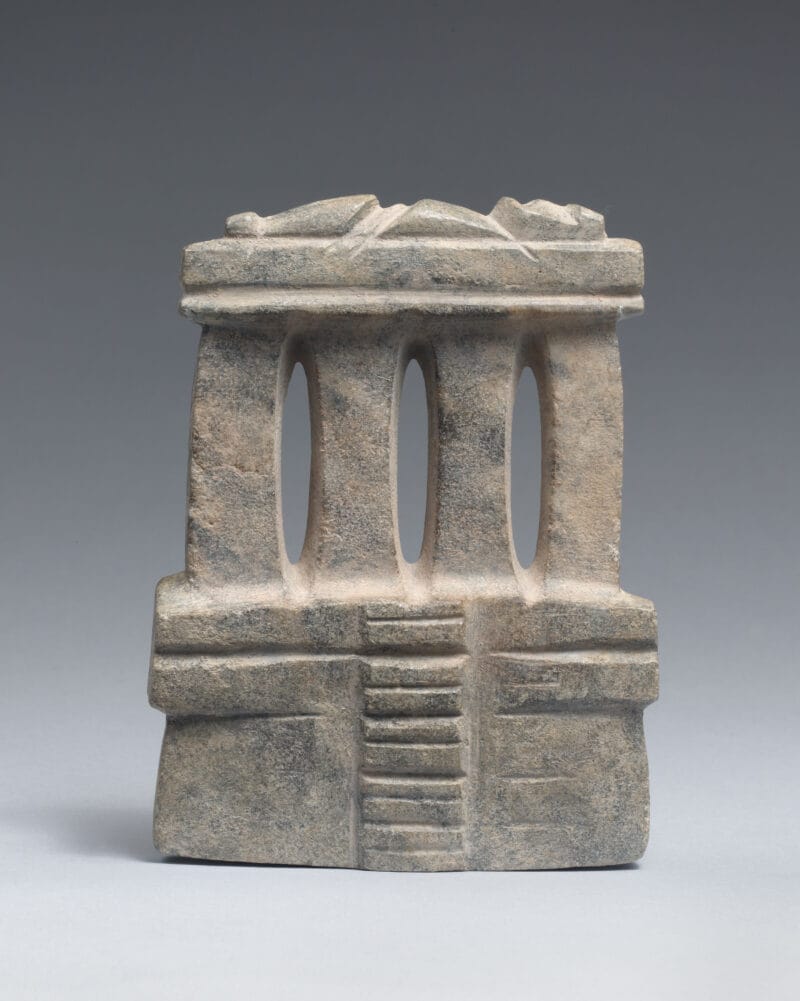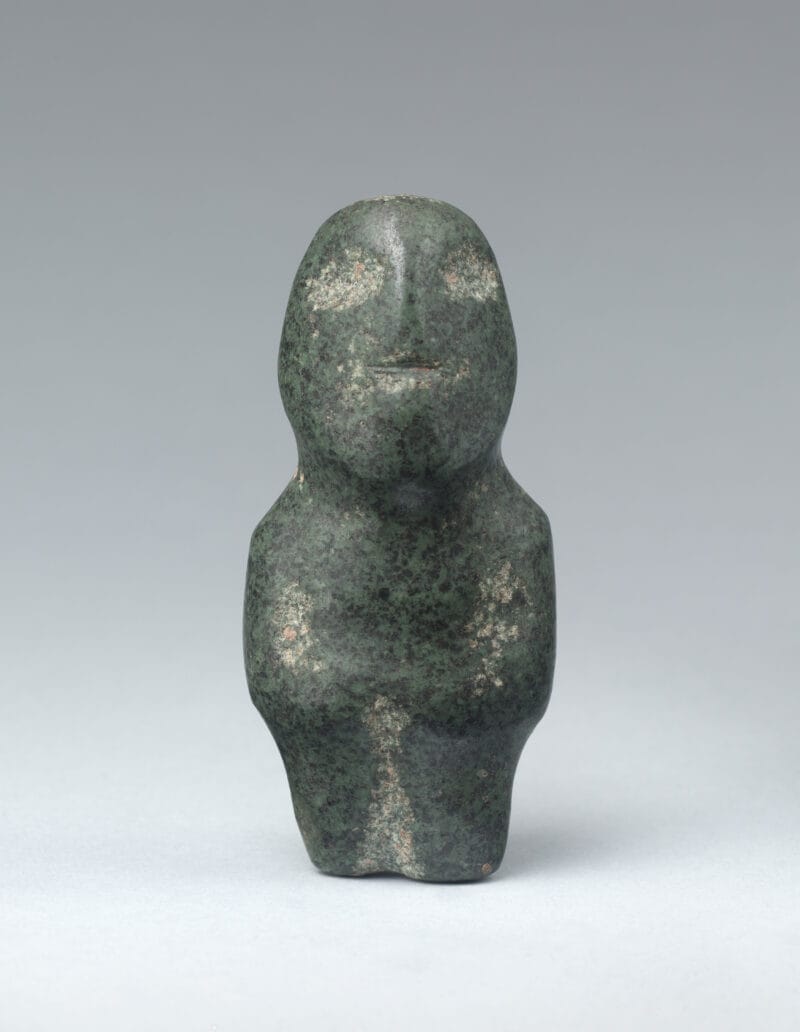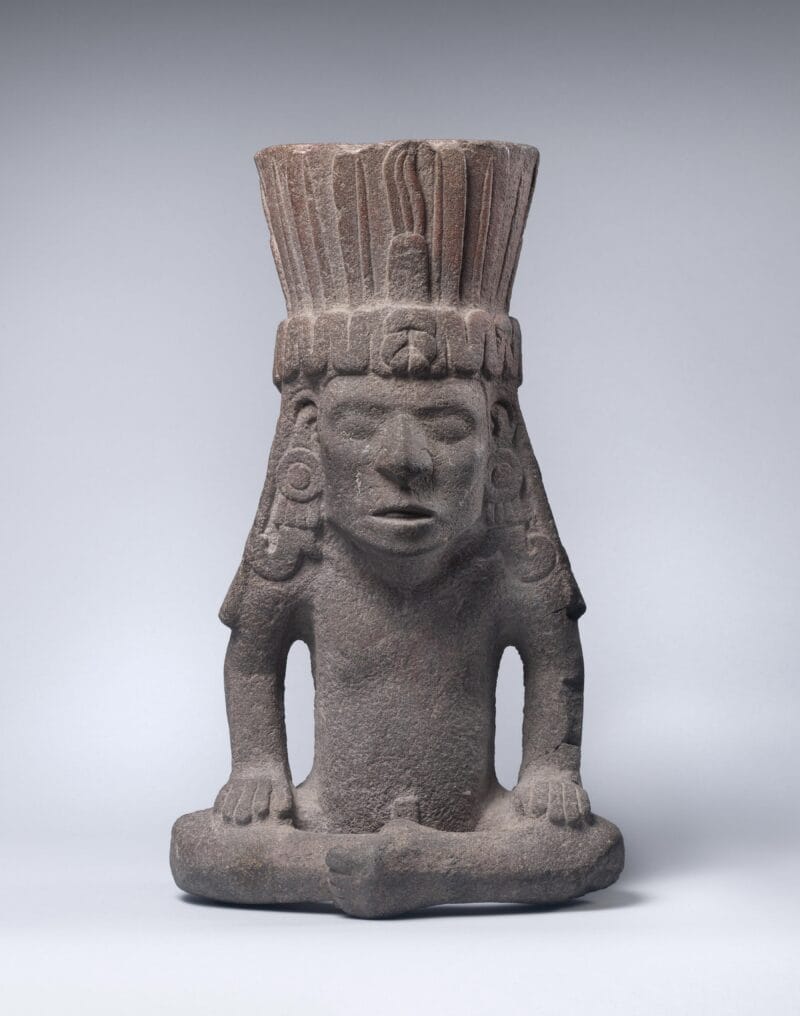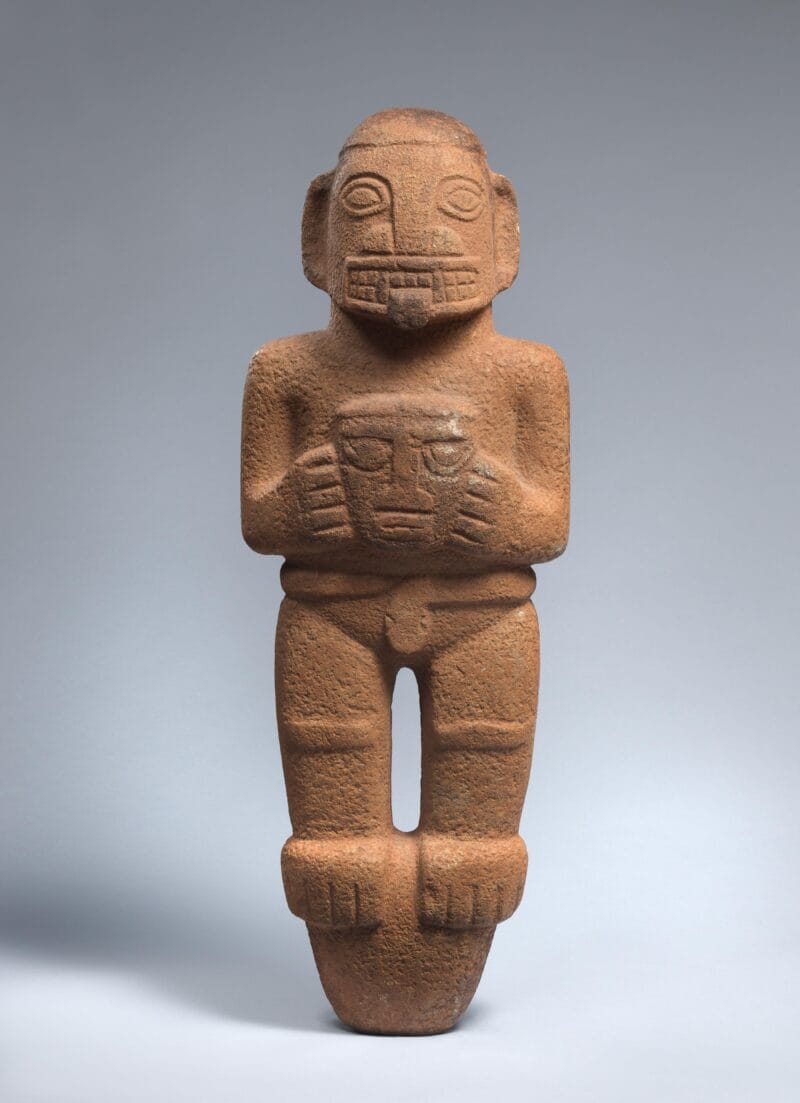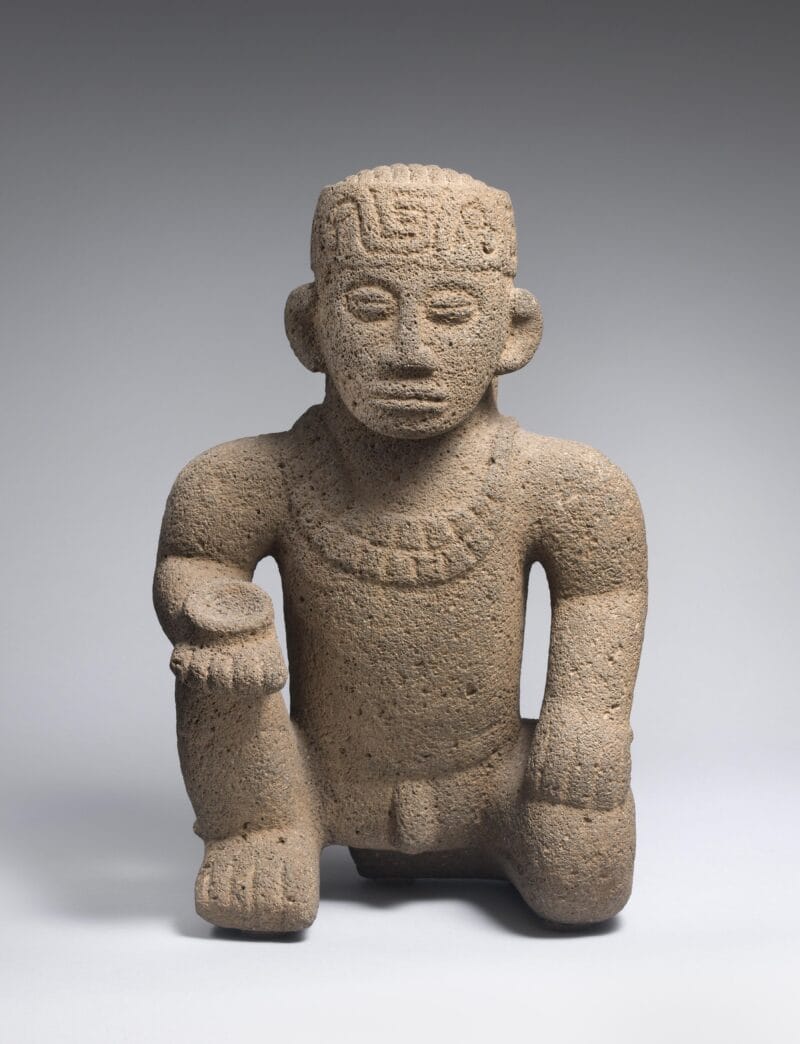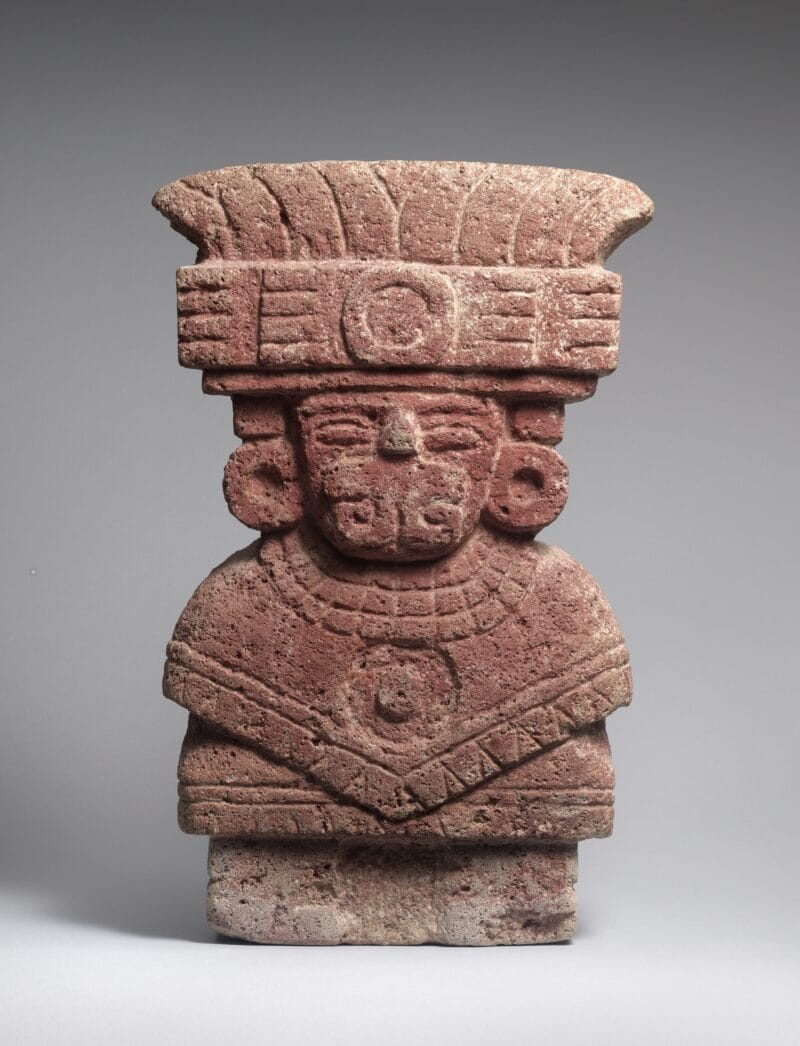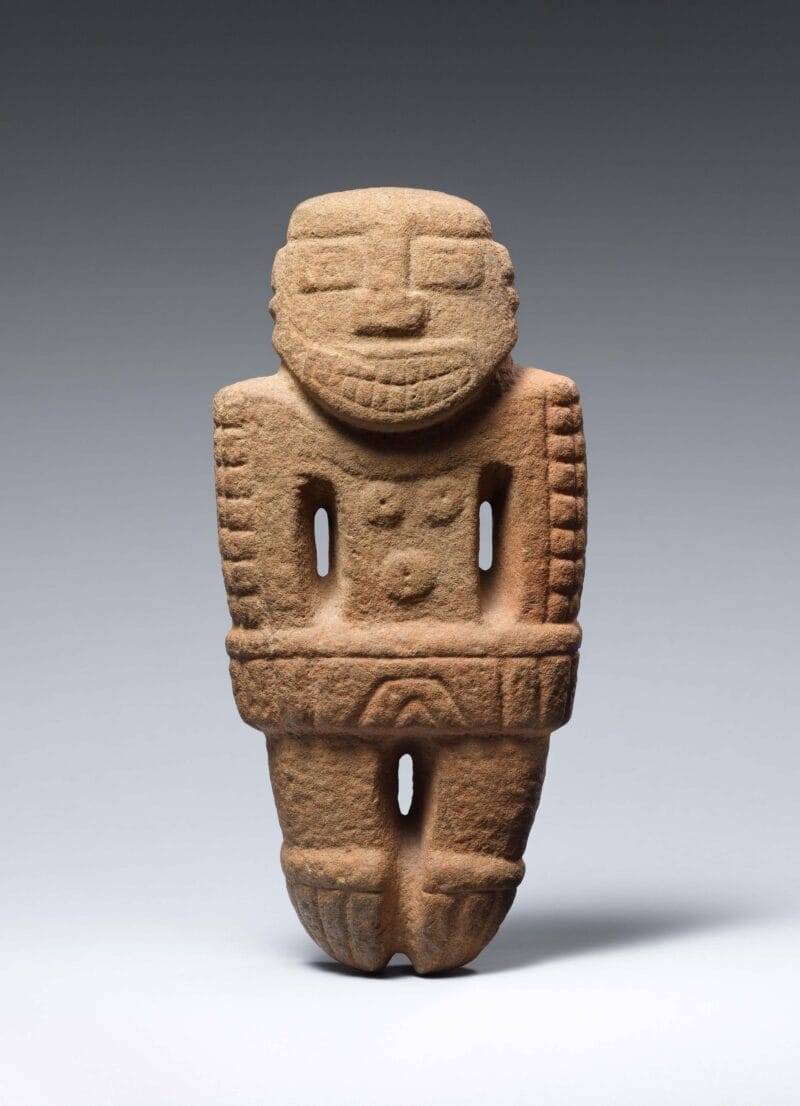
About the Object
Featuring a male warrior dressed for battle, this work was carved from volcanic stone. The figure is perched atop a pedestal base and faces forward, open mouth revealing teeth; incised arms placed on each side of the torso, perhaps represent paint or a tattoo. The figure also wears a necklace, loincloth, and what is most likely a stylized helmet. The pedestal itself originally may have been buried to support the work upright.
Additional Information
The archaeological division of Costa Rica falls into three style regions: the Guanacaste–Nicoya (northwest), the Central Highlands–Atlantic Watershed (east), and the Diquis (southwest). In addition to fostering an intrinsic relationship between agricultural and religious iconography, the rivalry for control of resources among ancient Costa Rican traditions is also thought to have caused these cultures to place great value on military prowess. Iconography associated with warfare is often found, especially in sculptural figures like this uncovered in the Diquis region.
[Throckmorton Fine Art, New York, NY];
The Jan T. and Marica Vilcek Collection, 2001-2010;
Gift to The Vilcek Foundation, 2010;
Related Objects
You may also be interested in
Iman Issa

Meleko Mokgosi

